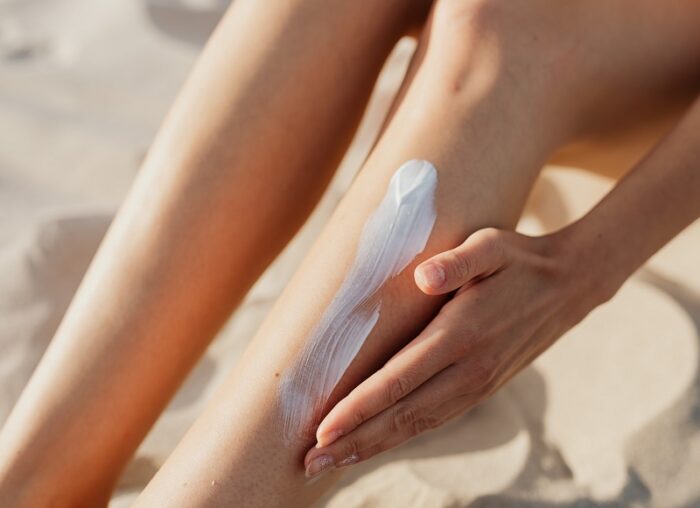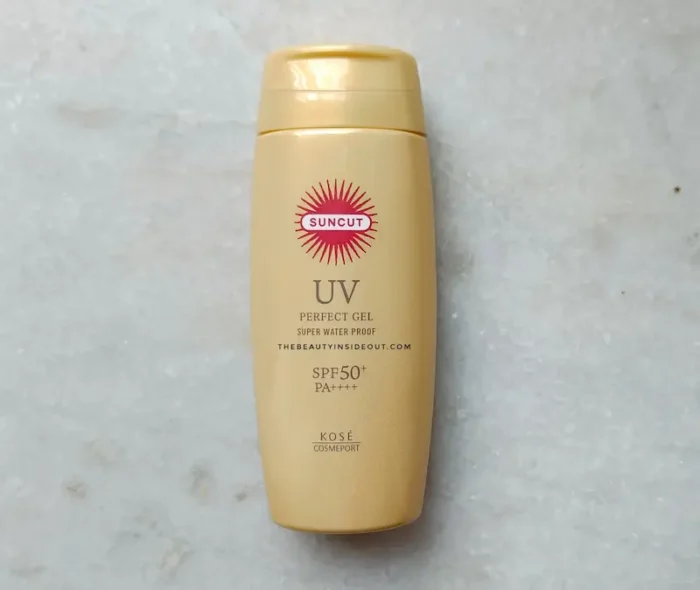Wondering what to do if your sunscreen leaves a white cast? Here are some of the practical tips that can help you to get rid of the sunscreen white cast!
Sunscreens are an absolutely essential and non-negotiable part of your morning skincare routine. They not only shield you from UV radiation and lower the risk of developing cancer by 40%, but they also ensure that your skincare products truly work and aren’t compromised by free radical damage.
Now, there is a spectrum of UV radiation that reaches Earth. Age spots, wrinkles, and early aging are all caused by long-wavelength UVA rays. While shortwave UVB is more dangerous and can lead to sunburns. And the ozone layer absorbs UVC, so it doesn’t reach human skin at all.
Sunscreens protect you by filtering the radiation as they reach your skin. So based on the filters they contain, sunscreens can be divided into two general categories:
the ones with Organic filters, or Chemical sunscreens, that absorb sunlight; and
the ones with Inorganic filters, also known as Physical sunscreens, that reflect sunlight.
The main filters in Physical Sunscreens are Zinc Oxide(ZnO) or titanium dioxide. And rather than absorbing into the skin, these filters will sit on top and disperse UV rays. ZnO offers broad UVA and UVB protection. It also gives incredible sun protection. Despite being very sustainable and safe, it leaves a white tinge on your skin. This is what’s usually called a “white cast”.
There are variations in the white cast skin to skin. A person with darker skin or more melanin can have a more pronounced white caste than someone with lighter skin, even when using the same physical Sunscreen. Also, a heavier Sunscreen will leave a greater white cast than a lighter one.
But it’s not impossible to get rid of it. So if you are confused about what to do if your sunscreen leaves a white cast, here are our best tricks to reduce or make them go away/fade away.
Table of Contents
7 Tips to Avoid White Cast From Sunscreen
1. Dab it around, instead of Rubbing it in
This one requires some effort but is well worth the wait. What you want to do is, dab tiny dots of sunscreen across your face with your fingers, continuing to do so until you have covered every area, then softly pat it around instead of swiping it through like you normally would. For the best application, apply a few thin layers, each 10 minutes apart.
2. Let the white cast settle down
The white cast is generally more prominent right after application. So if you’ve applied sunscreen, then wait for around 10 minutes, and the white cast will have significantly reduced. And a lot of sunscreens work great when you just let them sit for a few minutes. (Remember that this will also depend on the sunscreen formulation you use. )
5. Moisturize properly before sunscreen application
If your sunscreen is too thick, apply a really creamy moisturizer right before it. This will make it easier for the sunscreen to spread and will lessen the white cast. You’ll probably wind up appearing like white plaster if you apply sunscreen to dry skin, so avoid using them straight on extremely dry skin. Put some light moisturizer first. And you can also use a moisturizer that doubles as a sunscreen. Even with all of the physical sunscreen filters, such moisturizers will not leave you with a white cast.
4. Go for a Tinted sunscreen
Tinted sunscreens are usually sunscreens with the addition of Iron oxide or Zinc dioxide. Iron oxide acts as a pigment, giving your skin an earthy hue. Given its even-tone finish and matte texture, it also works as makeup for some. Tinted Sunscreen also conceals blemishes and dark spots.
On top of that, tinted sunscreens offer excellent defense against UVA, UVB, visible light, and artificial light. And, all types of skin, including sensitive and acne-prone skin can safely use them
5. Use Foundation with SPF
If you don’t have time to wait for your sunblock to gradually sink into your skin; skip it and apply an SPF-containing foundation instead. There’s plenty of foundation with SPF 15 and more available in the market. This will clearly be your makeup, but it will also provide you with the required sun protection. So pick the right shade for the ideal look.
6. Go for Chemical Sunscreen without White Cast
If you don’t want a white cast and aren’t keen on experimenting – Chemical sunscreens make a fantastic alternative. They use organic chemical filters such as Octisalate, Oxybenzone, and Avobenzone, among others. Chemical sunblock will take in the UV rays, break them down, and then release them as heat. Typically, they don’t leave a white cast and are lightweight and really easy to work with. Ideally, you want to pick a chemical sunscreen that doesn’t leave a white cast – with SPF 30 and above for maximum sun protection and reapply it every 2 hours.
7. Use a bronzer
It’s not generally advisable to blend sunscreen with anything, however, you could put bronzer on top to decrease the white cast. Get a suitable shade and simply brush it across to remove the white cast. This won’t take off the Sunscreen but will instead give you a better finish.
There is no one approach that will work for everyone, so try them all to gauge which one works best for you. And if you’re wondering why not just use a chemical sunscreen instead? It’s because they aren’t suitable for everyone. Like with sensitive skin would experience irritation from chemical sunscreens, so physical sunscreen would be their only option. So try and see what works best for you, because no one should miss out on sun protection!
FAQs on Sunscreen White Casts
What is zero white cast sunscreen?
A zero-white cast sunscreen is a sunscreen that leaves no white cast at all. It is literally what its name suggests. Some people call them “cosmetically elegant sunscreen” due to the fact that it doesn’t make you look white or ashy.
Is white cast from sunscreen bad?
No, the white cast from sunscreen is actually not bad for your skin. It’s just that it doesn’t make you look good. Imagine looking white and ghost-like, you wouldn’t want that right?
What ingredients in sunscreen cause white cast?
The white cast is usually a result of the sunscreen filter ingredient used in it. For example, physical filters like Zinc Oxide and Titanium Dioxide are white in nature, hence they do leave a prominent white cast. Similarly, the chemical filter Tinosorb M also has a tendency to leave a white cast, that’s particularly prominent on dark skin tones.
Does sunscreen white cast go away?
The answer is not straightforward. Typically it depends on the sunscreen formulation. Some are made in such a way that the white cast settles down and goes away after some time. There are also sunscreens whose white cast can stay put as long as it’s on your skin. So it all comes down to the sunscreen formula.
Do all mineral sunscreens leave a white cast?
Yes, it is very rare to find a mineral sunscreen that leaves no white cast. This is because the mineral filters are white substances in nature and it’s most likely impossible to formulate a mineral sunscreen that has absolutely zero white cast. The only possible alternative is to go for a tinted mineral sunscreen that will most likely blend into one’s skin tone.

Sejal Jain is a passionate beauty content creator at TheBeautyInsideout. She believes that skincare is not just a superficial thing but more like an expression of self-love and respect for your body and yourself.

